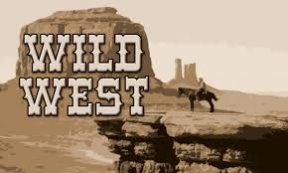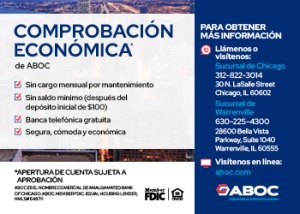
by Daniel Nardini
One of the greatest myths about the “Wild West” was that it has been portrayed as a truly wild and lawless place in countless theater plays, movies and TV shows. True, it was a period when the rule of law over a vast area could not be enforced, and true there were all kinds of problems with living and working in the area classically called the “Wild West.” But the Wild West was, in fact, a lot less wild than one would imagine. When we watch Western movies, we see shoot-outs all of the time and men making quick draws to out-gun their opponent. In fact, there were only 19 famous shoot-outs during the existence of the Wild West from 1840-1890. These shoot-outs took place over a 50-year period, and occurred in the states of Arizona, Kansas, New Mexico, Oklahoma and Texas. To put it mildly, there were in fact very few shoot-outs during the entire existence of the Wild West. In fact, the homicide rate in the Wild West was .06 percent. You were more likely to be murdered in New York City than, say, Tombstone, Arizona during the time period. Contrary to popular belief, ALL who rode into Wild West towns had to check their guns into the sheriff’s office. This law was strictly enforced.
Contrary to popular myth, the cowboy was not just a European white dude. It is estimated that 20 percent of all cowboys were African American, and one in four were in fact Mexican. There were also Native Americans (American Indians) who were cowboys! Life for a cowboy was rough and short, and those who became cowboys came from a low income class. A cowboy was more likely to die from disease, accidents and being attacked by a bobcat or cougar than from any shoot-out (or even old age as many cowboys did not usually live a long life). The myth of the cowboy being white, noble and a hero is a myth created by theater shows and later Hollywood movies more than anything else. Being a cowboy was a tough and dangerous job (note: there were cowgirls, but due to the fact that the Wild West had relatively fewer women, cowgirls were few and far between. Most women in the Wild West preferred to stay in the growing cities and towns like most of the men). One question has been asked if there were any Asian cowboys? Not that we know of. Even though there were many, many Chinese in the Wild West, there were none that wanted to work in the cattle trade since it was looked down upon as very low class and most cowboys would not have wanted Chinese immigrants working in that type of job.
This brings me to the next point—contrary to all kinds of myths, Wild West towns were NOT lily white. You had immigrants from Europe, immigrants from China, Mexicans who had lived in the areas that would become the Wild West later, and of course the Native Americans. Strangely enough, even though Native American tribes lived near many of the towns and cities of the Wild West, they were generally not hostile. Here is an interesting fact—out of all the things that killed settlers who went to live in the Wild West, only one percent was from any hostile actions from the Native Americans. Out of the 30,000 to 40,000 settlers who died on the frontier, only about 300 to 400 were from Native American attacks. This made the Wild West a lot more peaceful than it has been portrayed in Hollywood movies. Just as equally true is that for the most part, banks in the Wild West were not robbed. This sounds contrary to the myth that Wild West banks were robbed all the time. In fact, bank robberies in the Wild West were almost unheard of. Between 1850-1890, there were half a dozen banks robbed over a 40-year period in 15 states in the Wild West. This number is extremely small even by the standards of the day. A person was more likely to be struck by lightening than a victim of a bank robbery in the Wild West.
Given all this, why do we have such a thoroughly distorted view of what the Wild West was? This owes in large part to what later historians tried to say what the Wild West was, and no small amount of racism that painted out all of the racial and ethnic groups including the Native Americans. Later historians and writers would also make the Native Americans look like savages. The Wild West was more than that, and there is much of what that time period was that is still a fascinating episode in American history without any of the myths and non-sense thrown in.

 Choose your own opera adventure at Explore Your Lyric! April 3, 2025
Choose your own opera adventure at Explore Your Lyric! April 3, 2025

 Boleros de Noche Makes Chicago Debut at Symphony Center April 3, 2025
Boleros de Noche Makes Chicago Debut at Symphony Center April 3, 2025




The Multicultural Wild West
by Daniel Nardini
One of the greatest myths about the “Wild West” was that it has been portrayed as a truly wild and lawless place in countless theater plays, movies and TV shows. True, it was a period when the rule of law over a vast area could not be enforced, and true there were all kinds of problems with living and working in the area classically called the “Wild West.” But the Wild West was, in fact, a lot less wild than one would imagine. When we watch Western movies, we see shoot-outs all of the time and men making quick draws to out-gun their opponent. In fact, there were only 19 famous shoot-outs during the existence of the Wild West from 1840-1890. These shoot-outs took place over a 50-year period, and occurred in the states of Arizona, Kansas, New Mexico, Oklahoma and Texas. To put it mildly, there were in fact very few shoot-outs during the entire existence of the Wild West. In fact, the homicide rate in the Wild West was .06 percent. You were more likely to be murdered in New York City than, say, Tombstone, Arizona during the time period. Contrary to popular belief, ALL who rode into Wild West towns had to check their guns into the sheriff’s office. This law was strictly enforced.
Contrary to popular myth, the cowboy was not just a European white dude. It is estimated that 20 percent of all cowboys were African American, and one in four were in fact Mexican. There were also Native Americans (American Indians) who were cowboys! Life for a cowboy was rough and short, and those who became cowboys came from a low income class. A cowboy was more likely to die from disease, accidents and being attacked by a bobcat or cougar than from any shoot-out (or even old age as many cowboys did not usually live a long life). The myth of the cowboy being white, noble and a hero is a myth created by theater shows and later Hollywood movies more than anything else. Being a cowboy was a tough and dangerous job (note: there were cowgirls, but due to the fact that the Wild West had relatively fewer women, cowgirls were few and far between. Most women in the Wild West preferred to stay in the growing cities and towns like most of the men). One question has been asked if there were any Asian cowboys? Not that we know of. Even though there were many, many Chinese in the Wild West, there were none that wanted to work in the cattle trade since it was looked down upon as very low class and most cowboys would not have wanted Chinese immigrants working in that type of job.
This brings me to the next point—contrary to all kinds of myths, Wild West towns were NOT lily white. You had immigrants from Europe, immigrants from China, Mexicans who had lived in the areas that would become the Wild West later, and of course the Native Americans. Strangely enough, even though Native American tribes lived near many of the towns and cities of the Wild West, they were generally not hostile. Here is an interesting fact—out of all the things that killed settlers who went to live in the Wild West, only one percent was from any hostile actions from the Native Americans. Out of the 30,000 to 40,000 settlers who died on the frontier, only about 300 to 400 were from Native American attacks. This made the Wild West a lot more peaceful than it has been portrayed in Hollywood movies. Just as equally true is that for the most part, banks in the Wild West were not robbed. This sounds contrary to the myth that Wild West banks were robbed all the time. In fact, bank robberies in the Wild West were almost unheard of. Between 1850-1890, there were half a dozen banks robbed over a 40-year period in 15 states in the Wild West. This number is extremely small even by the standards of the day. A person was more likely to be struck by lightening than a victim of a bank robbery in the Wild West.
Given all this, why do we have such a thoroughly distorted view of what the Wild West was? This owes in large part to what later historians tried to say what the Wild West was, and no small amount of racism that painted out all of the racial and ethnic groups including the Native Americans. Later historians and writers would also make the Native Americans look like savages. The Wild West was more than that, and there is much of what that time period was that is still a fascinating episode in American history without any of the myths and non-sense thrown in.